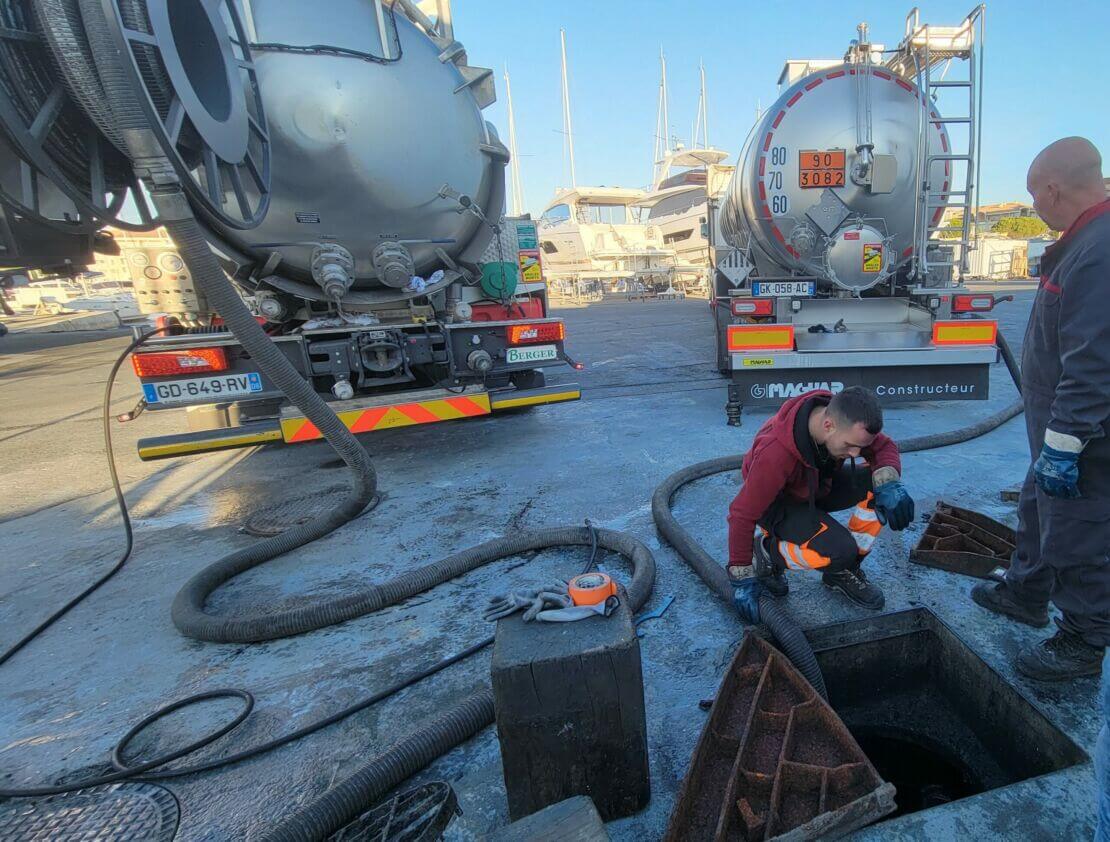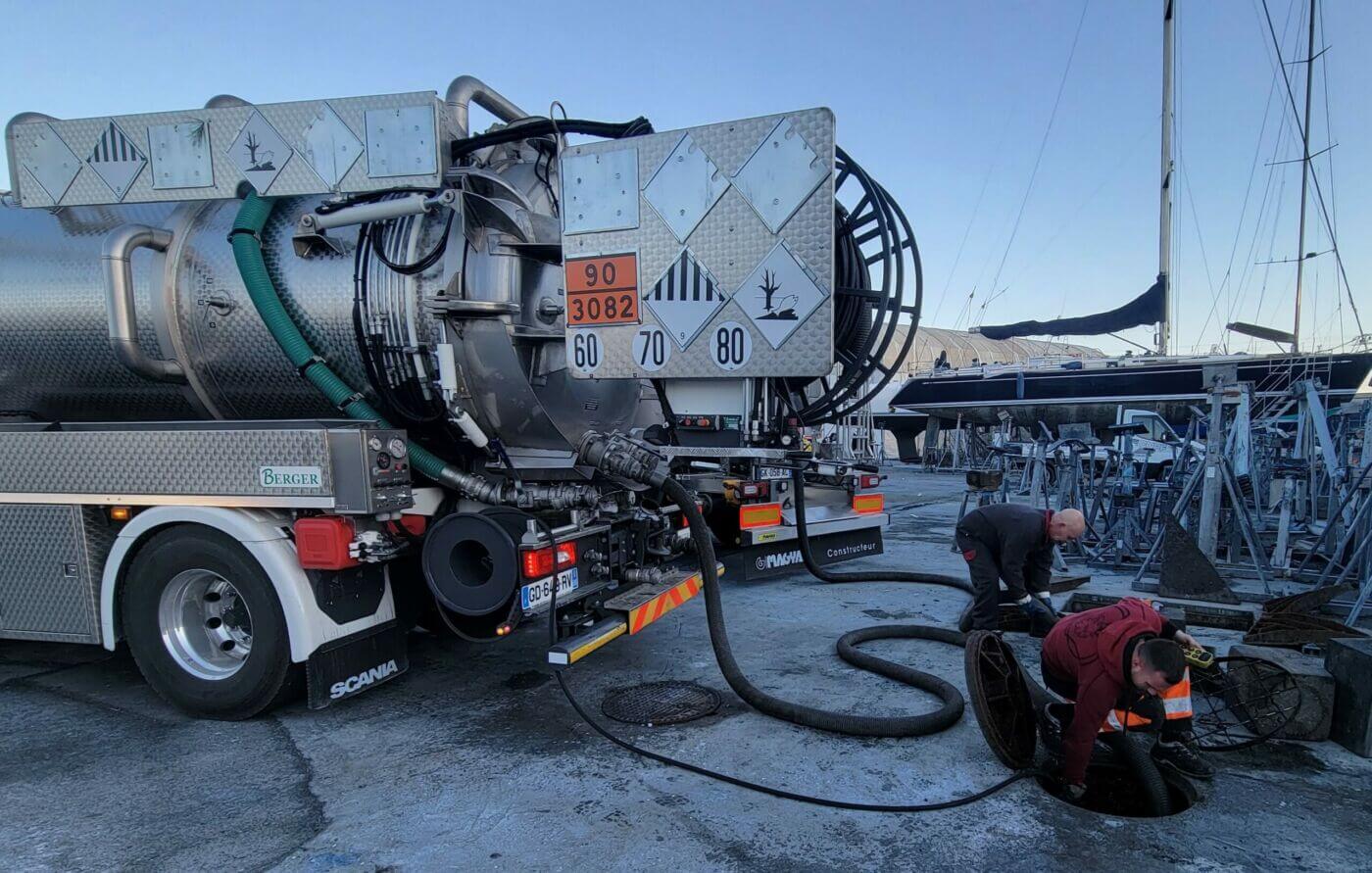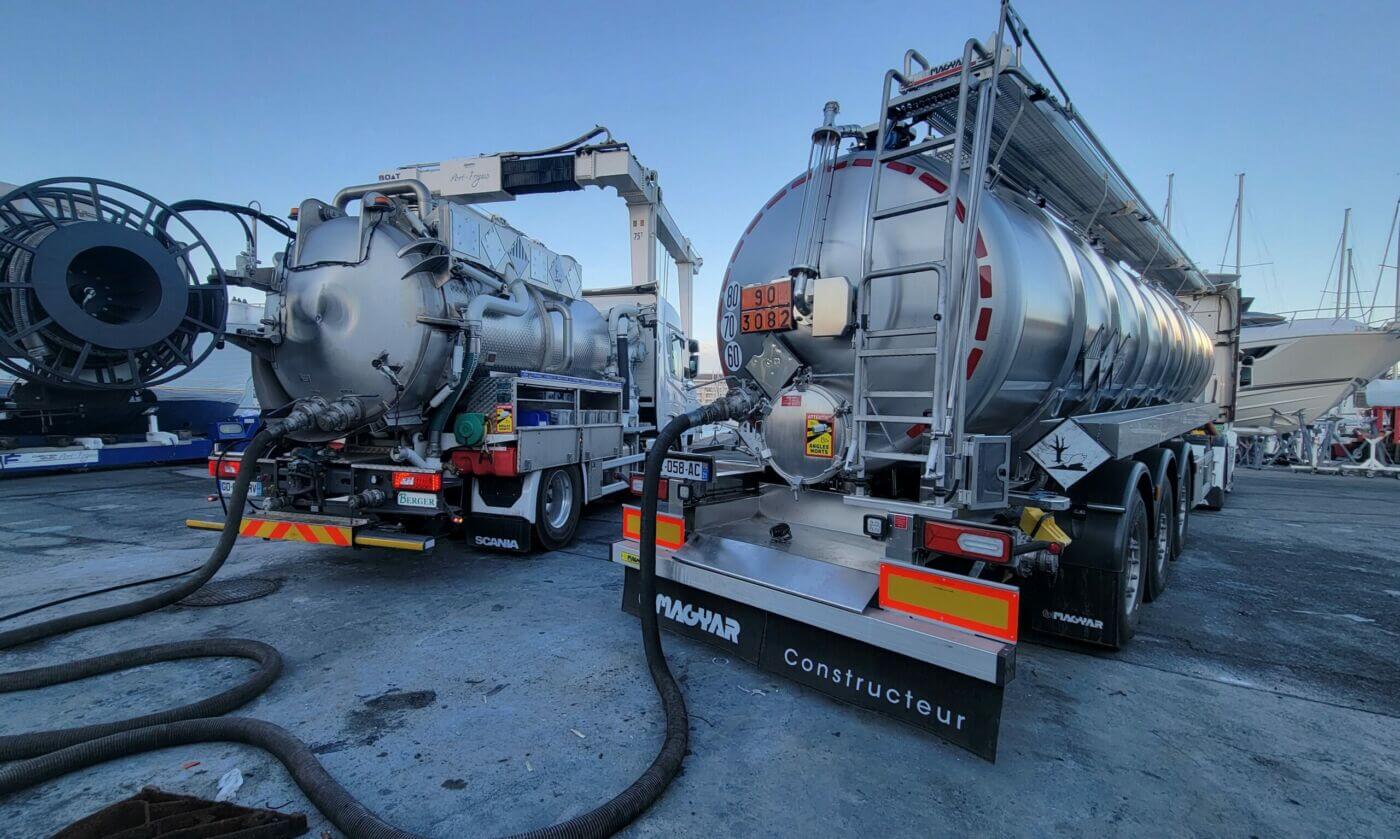
The preservation of the sea and the coastline has been well anchored for several years within the Port-Fréjus Shipyard. Indeed, this concern for pollution, respect for the environment and the oceans by these sea enthusiasts, led, 15 years ago, to the installation of a sludge and wastewater recovery tank.
Today, it is a mandatory equipment standard for shipyards to limit discharges into the sea and thus impacts on the environment.
It is an expensive system for the shipyard but necessary for the preservation of the fauna and flora of the coast.
The tank of the Port-Fréjus Shipyard is about 40m³. The emptying of this water recovery tank is done once a year, in December, in low season.
The vast majority of boats (sailboats, engines, professionals) carry out an annual operation called refit. This operation consists of cleaning the hull and then applying an antifouling containing biocides to limit the fact that shellfish and algae do not cling to it.
The recovery tank recovers wastewater and these paints harmful to our environment.
The various works carried out on the fairing area, such as hull cleaning before fairing, for example, produce residues and dust.
The residues of these toxic products are removed from the fairing area surrounded by the gutters. This water is thus discharged into the recovery tank. The material is filtered and then decanted directly into the tank. This then divides in two, the upper part is water, the lower part is toxic matter. In order to carry out the emptying, it is necessary to bring in two tanker trucks, allowing the sludge to be evacuated from the recovery tank.
In the case of our site, toxic materials are sent to Rognac, near Marseille, to be incinerated.
Finally, the shipyard provides the manager of Port-Fréjus (SPL), a slip justifying the treatment of waste by an approved sector. Environmental policy is a central issue today at all levels within the Port-Fréjus shipyard, composed of sea enthusiasts.
Everything is done to carry out our fairing operations while limiting the impact on our environment.

